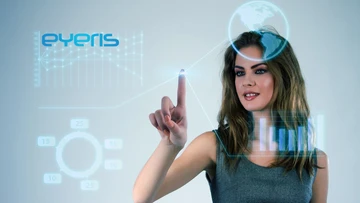In-Cabin Monitoring Systems in the Automotive Industry
Artificial Intelligence operates across the entire value chain of the automotive industry: from design to sale or rental, through production, to drive the vehicle.
Today, a majority of manufacturers (Tesla, GM, Ford, BMW, Toyota, PSA, Renault-Nissan) and companies such as Waymo, Uber, NuTonomy dream of robotic vehicles without any human presence being necessary. It is estimated that in 2025, the installation rate of AI-based systems in new cars should increase by 109% (it was 8% in 2015 according to figures communicated by IHS Markit).
Another key focus area that has captured the attention of automakers and safety regulators is improving road safety. In-cabin monitoring has gained wide popularity and has seen significant advancement. In simple terms in-cabin monitoring is the placement of cameras and vision system internally to monitor the driver and other occupants.
The Mood Detector in Jaguar Land Rover identifies the smallest variations in the driver’s facial expressions and interacts in real-time to optimize the parameters of their comfort. Bosch engineers managed to equip the cameras with artificial intelligence. The cameras with artificial intelligence fitted to vehicles are now able to recognize objects, classify them into several categories (cars, pedestrians, or bikes) and measure their movements. During difficult urban journeys, the camera can quickly detect partially masked or sideways vehicles, pedestrians and cyclists, with reliability.
Eyesight Technologies and Grupo Antolin recently announced that the companies have joined hands to provide driver and ownership monitoring solutions to OEMs globally. Grupo Antolin’s deftness to integrate third-party solutions into its car interior components and the reinforcement of their control electronics will be complimented by Eyesight Technologies’ state-of-the-art in-cabin sensing solutions (Driver Sense and Cabin Sense) to transport smart-integrated internal systems with significant exacerbation.
The collaboration will provide car manufacturers with in-cabin sensing solutions tailored to answer regulatory needs and enhance the driving & riding experience, leveraging Eyesight Technologies’ computer vision AI and Grupo Antolin’s interior component design and integration capabilities.
Eyeris Technologies’ in-cabin sensor fusion AI consolidates data from the image, radar, and thermal sensors and conjectures it on the AI processors to meticulously retrieve consummate in-vehicle scene assimilation, from the driver and incumbent monitoring to object detection and surface classification, for the intent of adding intelligence to invulnerability and opulence controls.
Equipped with SIM cards and serving as a Wi-Fi hotspot, AI cars now look like smartphones on four wheels. Staying connected, cars have an enormous need for data, which means they have to go through an AI-managed cloud. It is a question of being able to provide a maximum of services to the user, such as the simple fact of unlocking, closing, starting or preheating his vehicle remotely to more complex services such as updating the navigation, geolocating it in the event of theft, breakdown or accident.
Finally, AI does not just manage driving aids; it also takes care of preventive maintenance. One of its functions is also the monitoring of a multitude of sensors linked to the functional organs of the vehicle. Thus, by analyzing the return of data from these sensors, the system can predict and anticipate the future failure of a component that may affect the proper functioning of the vehicle.
To deep dive and stay continuously updated about the most recent global innovations and learn more about applications in your industry, test drive WhatNext now!








Leave a Comment